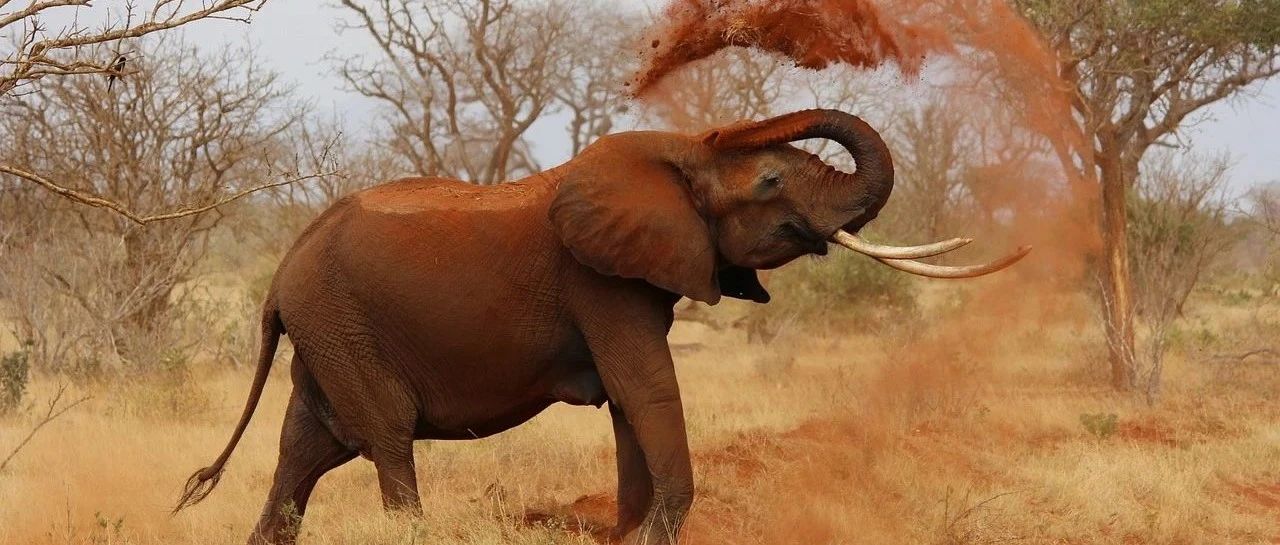
The speed of absorbing water is equivalent to 24 shower heads! Is there anything else the elephant trunk can't do?
Cake grab Challenge of African Elephant Kelly
at the Atlanta Zoo, a female African elephant named Kelly is facing the challenge of strange food.
on the platform in front of me lies a strange food I've never seen before: it's round, thin, and smells a little good-it's a Mexican pretzel. The 0.5mm thick pretzels, which stick to a smooth surface, are hard to pick up and break with the slightest effort, which is probably the most difficult food Kelly has ever seen.
surprisingly, Kelly completed this difficult challenge on its first attempt. It grabbed the pretzel and stuffed it into its mouth unscathed, and the whole process took only three seconds.
(can't you catch it? Nothing | provided by the researcher)
how did she do it? The answer is to rely on the strong suction of the trunk.
[ is the food too hard to catch? ]
Kelly is a subject in a scientific study, through which researchers hope to learn more about the excellent ability of the elephant trunk.
usually, African elephants use their trunks to grab grass, leaves, fruit, bark, and other food. The study found that when grabbing difficulties, elephants also use their suction to absorb food. This ability to grab by airflow is rare inland mammals.
(African elephant Kelly | Zoo Atlanta)
in the study, people set a variety of food challenges for Kelly, such as a series of food cubes of different numbers and sizes. The results showed that when faced with larger, smaller food cubes, the elephant controlled the front part of the trunk and grabbed the food like a hand. If the size of the food is small and the quantity is so large that it is difficult to "grab", the elephant will take a deep breath and collect the food into its nose. However, if it is a food with very small particles such as wheat bran, the elephant will give up the intake and return to grabbing food. On the one hand, this choice improves eating efficiency, on the other hand, it can help elephants avoid inhaling particulate foreign bodies.
(are there too many small pieces of food? Get it all with suction (provided by the researchers)
and even if it is a light, fragile and unfamiliar food like pretzels, elephants can still successfully feed through suction. High-speed video shows that the trunk first picks up the pancake by inhaling, and then holds it firmly.
Transform you to look more beautiful in our cheap long sleeve wedding dresses! Effortless to use and amazing value too.
[suck quickly, pack more]
what is the suction of the trunk? Combined with the measurement of the water absorption process of the object's nose, the researchers calculated it.
the results show that the elephant can absorb water at a speed of 3.7 liters per second, which is equivalent to opening 24 showerheads or flushing 20 toilets at the same time. When they inhale, the instantaneous speed of air can reach 50 meters per second-almost 30 times the speed of air when people sneeze.
(elephant trunk absorbs water. The strong suction of elephants depends not only on their vital capacity but also on the structural characteristics of their trunks, which are added to the water to show the flow of water.)
the strong suction of elephants depends not only on vital capacity but also on the structural characteristics of the trunk. The elephant trunk is not a fixed "straw". It can expand rapidly when absorbing liquid: the radius of the nostril can be expanded by up to 30%, and the volume of the nasal cavity can be expanded by up to 64%. Expandable nostrils can not only store more water but also help accelerate the airflow, providing favorable conditions for absorbing difficult food.
(through ultrasound imaging, the researchers analyzed the ability of elephant nostrils to dilate.)
not only that, but the inner wall of the nose of elephants is also different from that of other animals. Co-lead author Wu Jianning of Sun Yat-sen University said they analyzed the structure inside the elephant's nose and compared it with a variety of other mammals-including Wu's nostrils. Observation shows that the nasal passages of most mammals are rough and even have nasal hairs, while the nasal passages of elephants are particularly smooth. In this way, the airflow is unimpeded in the nasal cavity, which makes it easier to form a large enough negative pressure to absorb all kinds of things.
the flexible and soft elephant trunk has always been the object that engineers learn to imitate, and the research on the absorption ability of the object trunk can also provide a reference for the design of a new type of bionic software robot.